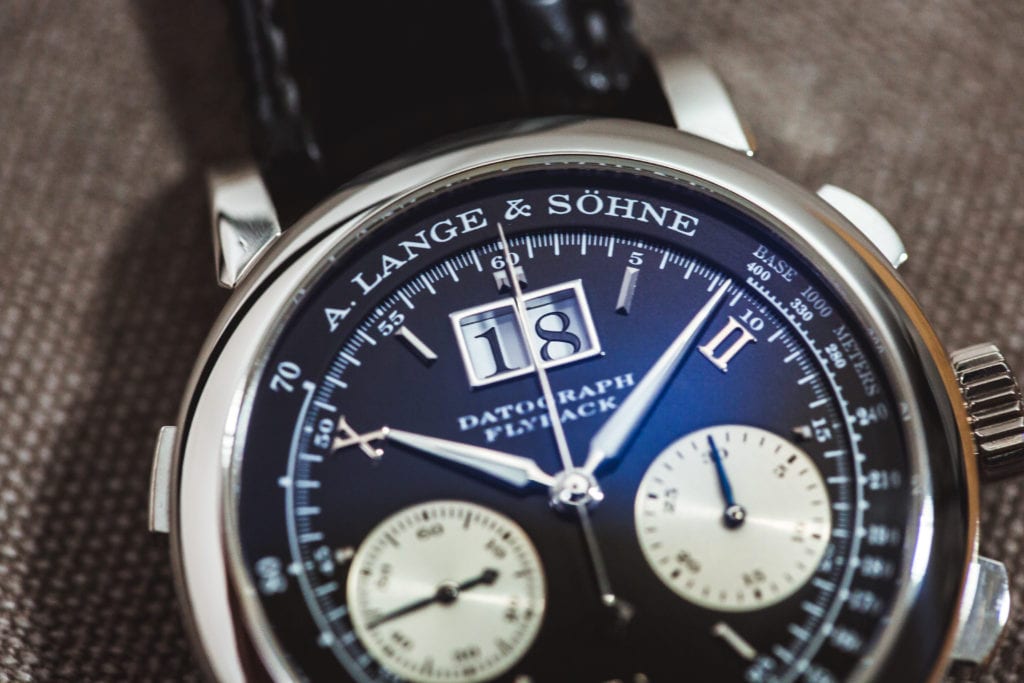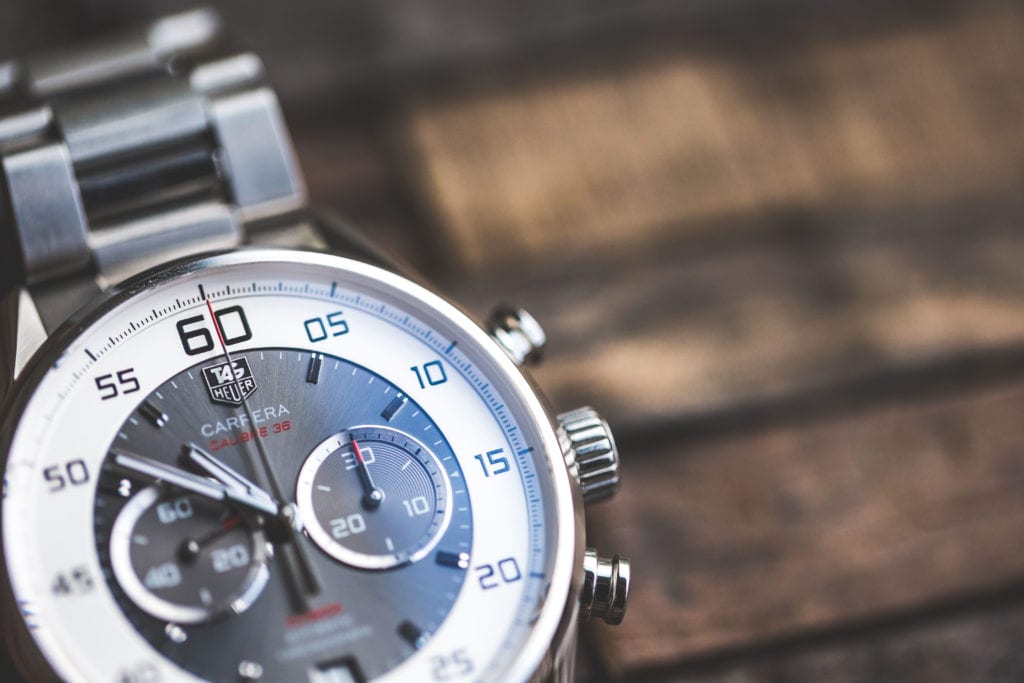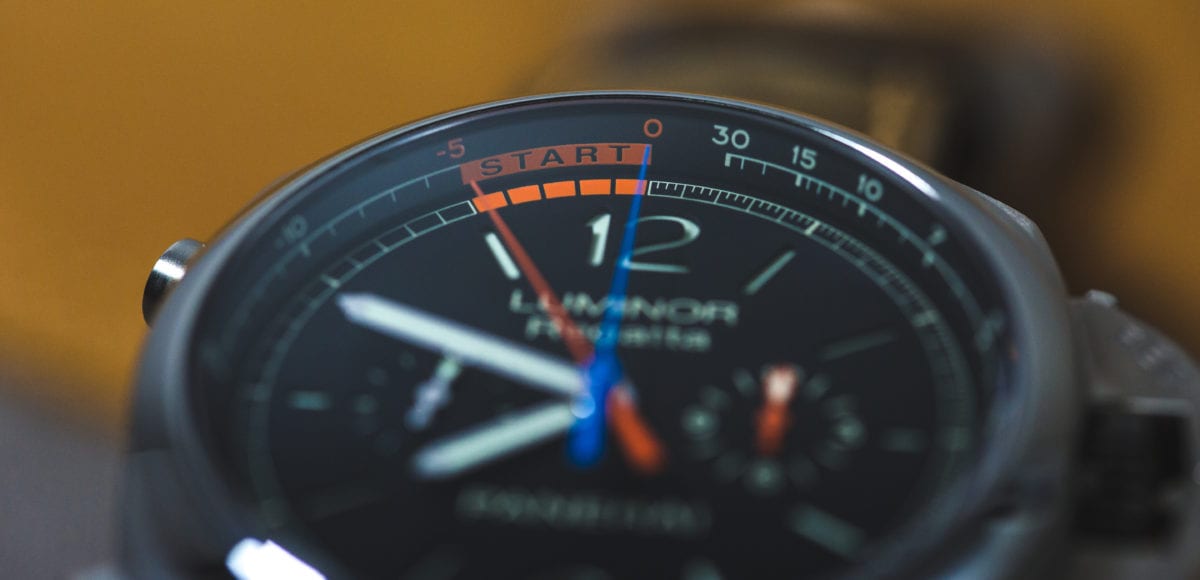The chronograph is one of the most common and most popular watch complications. In the simplest terms, a chronograph is a stopwatch used to record or measure elapsed time. However, there are also variations on the chronograph. The three main types are the mono-pusher, the rattrapante, and the flyback. You may recall our discussion of the rattrapante a while back. The rattrapante is also called split-seconds or double chronograph. It allows the wearer to record multiple time intervals that start at the same time but don’t end at the same time. The flyback is often confused with the rattrapante when in fact it adds a totally different functionality to the chronograph. Here, we’ll explore the flyback chronograph a bit further.
What is a Flyback Chronograph and How Does it Work?

In a traditional chronograph, there are two pushers flanking the crown. In most cases, you engage the top pusher to start and stop the chronograph function. Then, you use the bottom pusher to reset the chronograph back to zero. The standard chronograph is perfect for timing a single event, like a sprint. Alternatively, the flyback chronograph helps you to time multiple events in sequence, say a relay instead of a single sprint. Essentially, it allows the wearer to bypass the typical sequence of stopping, resetting, and restarting the chronograph in order to time a second event. Instead, the flyback function enables you to do it all with a single push of a button. Here’s exactly how it works: you start the chronograph mechanism as usual by engaging the top pusher. Then, as soon as you’re ready to time your next interval, you simply press the bottom pusher. In doing so, the chronograph hand will instantly reset to zero and begin again.
Brief History and Application of the Flyback Chronograph

Breitling gets the credit for inventing the standard two-pusher chronograph we know today back in 1932. However, Longines introduced the first flyback chronograph just a few years later in 1936. With the onset of WWII, flyback chronographs quickly became prevalent among a number of watch brands. This is because the flyback chronograph was ideal for military pilots. They used the flyback chronograph for any range of calculations. From practice flights in training to supply drops in combat, the flyback chronograph came in handy. Following the war, the flyback chronograph became popular in automobile racing. Drivers found the functionality equally useful to track lap times during practice or a competition.
Notable Flyback Chronograph Models

Breitling and Longines continue to incorporate flyback chronograph models into their collections. However, there are other brands with notable flyback chronograph offerings as well. For instance, Zenith is a brand famous for their chronograph, the El Primero. It comes as no surprise they would add variations on the iconic model with a flyback function. Blancpain and Panerai are two other brands who have chosen to enhance their chronograph offerings with a flyback mechanism. For Blancpain, you can find it added to iconic models like the Fifty Fathoms. The same goes for Panerai, with a flyback function incorporated into classics like the Luminor. A final example is a brand like Breguet, who has a long history of both pilot watches and military watches. Their Type XX series draws from the brand’s Type 20 pilot chronographs from the WWII era. With the Type XX, they paid homage to the heritage of the flyback.
Get More Articles Like This in Your Inbox
We're constantly creating great content like this. So, why not get it delivered directly to your inbox? By subscribing you agree to our Privacy Policy but you can unsubscribe at any time.






